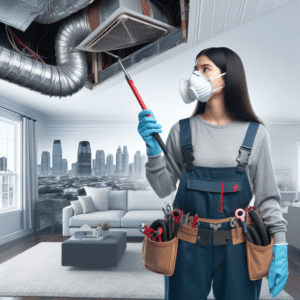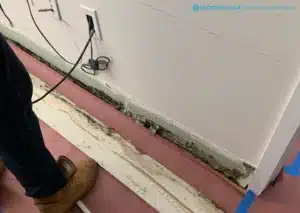The Dangers of Ceiling Drywall Water Damage
Drywall ceilings are a common feature in modern homes and buildings, providing a smooth and clean finish to any room. However, they are also susceptible to water damage, which can be a nightmare for homeowners and business owners alike. Water damage to drywall ceiling can lead to not only structural issues but also health hazards. In this blog post, we will dive into the causes and effects of ceiling drywall water damage and provide tips on how to remediate the issue to ensure the safety and integrity of your property.
The Causes of Water Damage on Ceiling Under Bathroom
One of the most common causes of water damage on the ceiling under a bathroom is a leaky or burst pipe. Pipes in the bathroom are constantly under pressure and can wear out over time, leading to cracks and leaks. This can also happen due to poor installation or maintenance of the plumbing system. Another culprit is a clogged drain or overflowed toilet, which can cause water to seep through the ceiling and cause damage to the drywall. Professional water damage restoration services can help address issues like these effectively.
In some cases, the bathroom above may not be the source of the water damage. Roof leaks or a faulty HVAC system can also cause water to seep into the ceiling and damage the drywall. It is important to identify the root cause of the water damage to properly address the issue.
The Effects of Ceiling Damage from Water Leak
The effects of ceiling damage from water leak can be quite extensive and severe. As the water seeps into the drywall, it can cause it to sag, bubble, or even crumble. This not only affects the appearance of the ceiling but can also compromise its structural integrity. As the drywall weakens, it can become a safety hazard, especially if the damage is not remediated in a timely manner. Mold removal services might also be required to prevent mold growth.
Moreover, water damage can also lead to the growth of mold and mildew, which thrive in damp and humid environments. These microorganisms not only cause a musty odor but can also trigger allergies and respiratory issues. It is crucial to address ceiling damage from water leak as soon as possible to prevent these health hazards from occurring.
How to Remediate Water Damage to Drywall Ceiling
Step 1: Identify and Stop the Source of Water
The first and most important step in remediation is to identify and stop the source of water. This may require the help of a professional plumber or contractor. If the cause is a burst pipe or roof leak, it is important to shut off the main water supply or temporarily patch the roof to prevent further water from entering the ceiling.
Step 2: Remove Damaged Drywall
Once the source of water has been stopped, the next step is to remove the damaged drywall. This may involve cutting out the affected area and replacing it with new drywall. It is important to wear protective gear, such as gloves and a mask, as the damaged drywall may contain mold and other harmful substances.
Step 3: Dry the Area Thoroughly
After removing the damaged drywall, it is crucial to dry the area thoroughly to prevent mold growth. This can be done using dehumidifiers, fans, and opening windows to improve air circulation. It is important to also check for any hidden pockets of moisture and ensure they are completely dry.
Step 4: Disinfect the Area
To prevent mold and mildew from growing, it is important to disinfect the affected area. This can be done using a solution of water and bleach or a commercial disinfectant. Be sure to follow the manufacturer’s instructions and wear protective gear when handling chemicals.
Step 5: Repair and Repaint the Ceiling
Finally, once the area is dry and disinfected, it is time to repair and repaint the ceiling. This may involve patching any remaining holes or cracks and applying a fresh coat of paint. Be sure to use a mold-resistant paint to prevent future mold growth.
Preventing Water Damage to Drywall Ceiling
The best way to deal with water damage to drywall ceiling is to prevent it from happening in the first place. Regular maintenance and inspections of your plumbing system and roof can help identify and address any potential issues before they become major problems. It is also important to address any leaks or water spots on the ceiling immediately to prevent them from getting worse.
In addition, installing a water leak detection system can alert you to any leaks or burst pipes, allowing you to take immediate action to prevent water damage. Investing in quality materials and proper installation can also help prevent water damage on the ceiling under a bathroom.
Final Thoughts
In conclusion, water damage to drywall ceiling can have serious consequences if not addressed promptly and properly. It is important to identify and stop the source of water, remove damaged drywall, thoroughly dry and disinfect the area, and repair and repaint the ceiling. Taking preventive measures can also help avoid future water damage and ensure the safety and integrity of your property. Remember, when it comes to water damage, it is always better to address the issue sooner rather than later.



